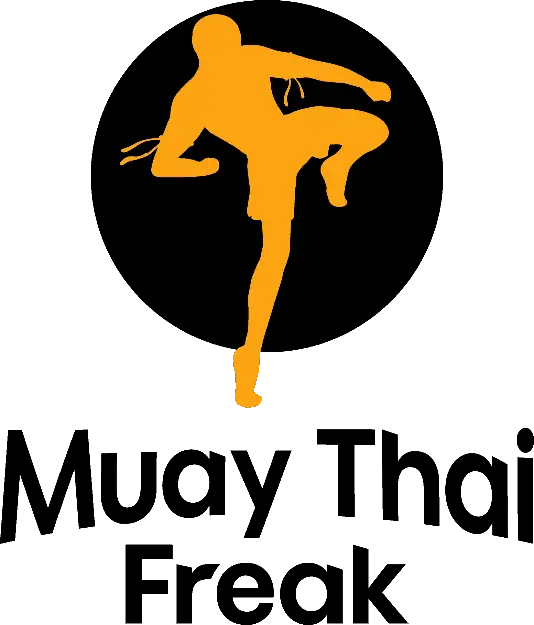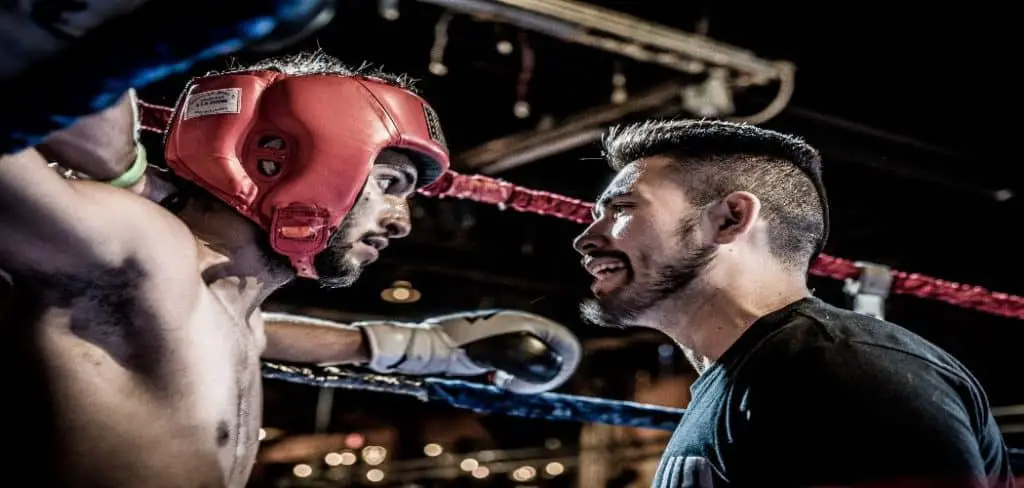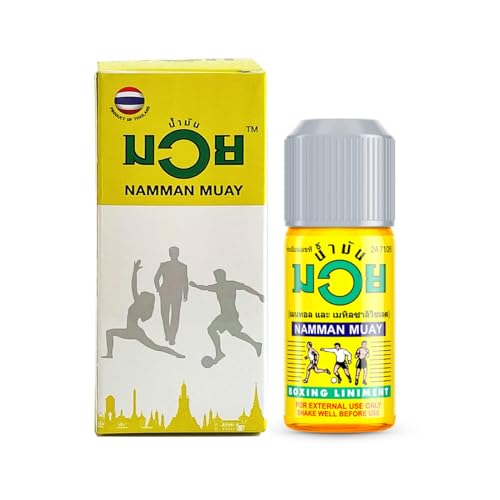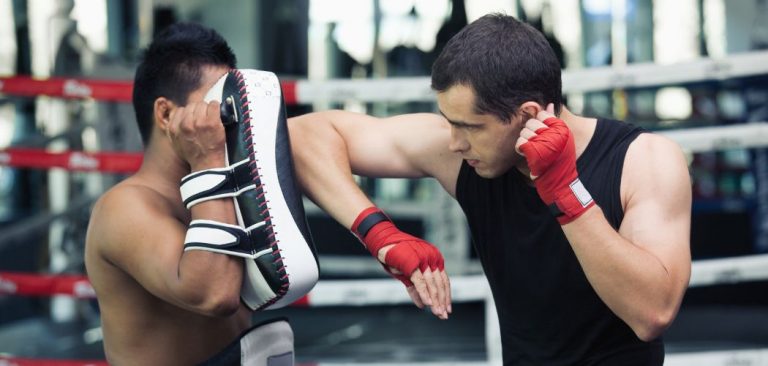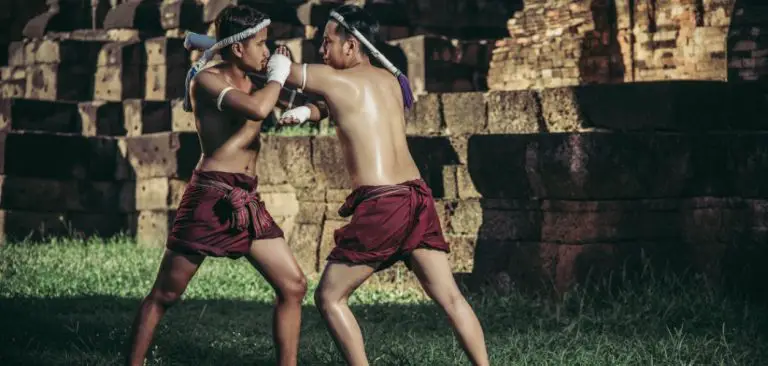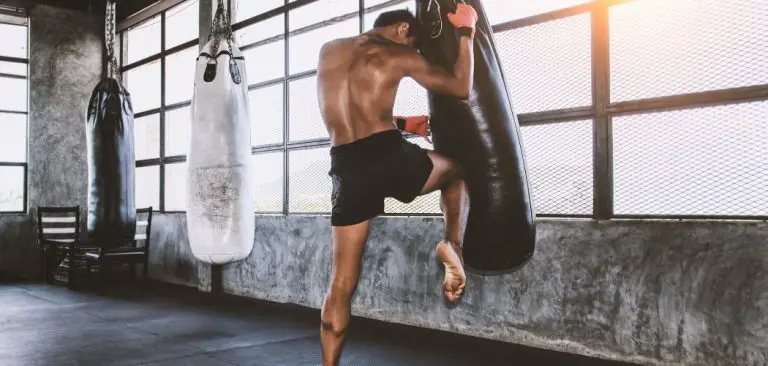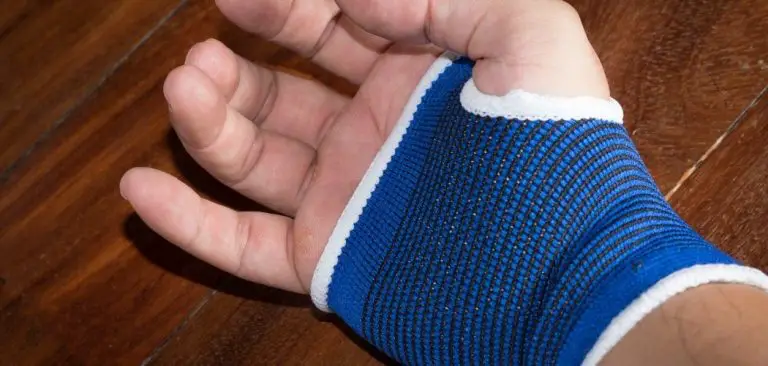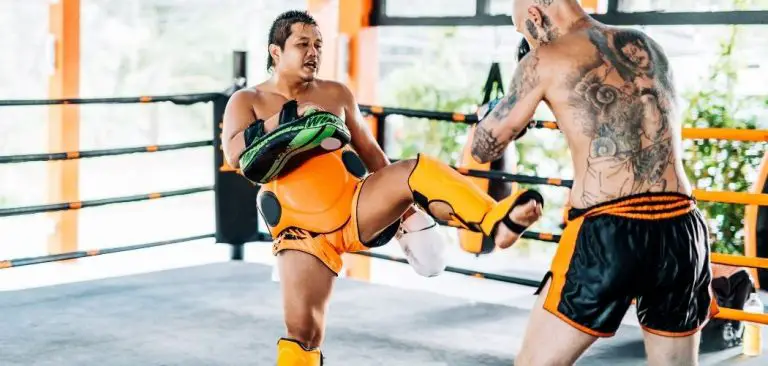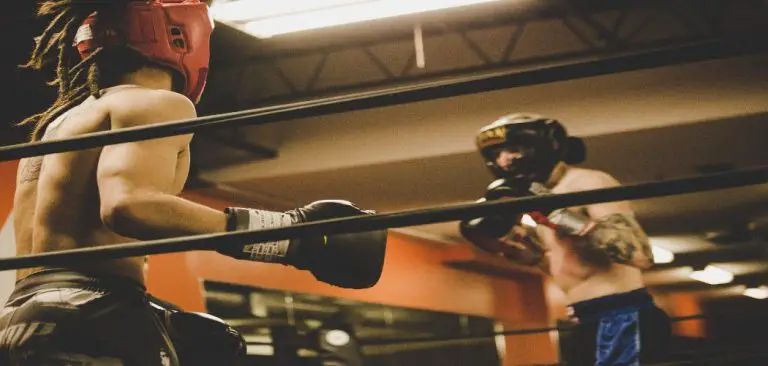Ah, the beginning is so hard! But you decided to start. Your Muay Thai voyage kicks off, everything changes.
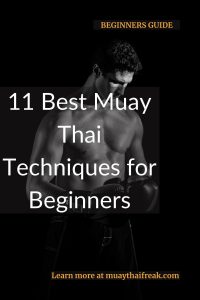
Now I know that you dream of becoming Buakaw Banchamek overnight, but even the greatest fighters begin with Muay Thai techniques for beginners. You can be the most promising talent in the world, but you can’t pummel and land big knees, and knockout blows off the clinch in your first training session.
Patience is the key to success, and I will get to know you with the best techniques for starters. It is easy to upgrade later, but the first two-three months will be hard, especially if you’ve never fought before. Don’t forget, one lives and learns!
Table of Contents
Muay Thai Techniques For Beginners – Starting From Zero
Your first training session is about to kick off and you’re very excited because you’ll learn some new wonderful moves. Yet, coaches can be strict in the early stages of your career. In the first few weeks, they will limit you to only a few strikes, which might irritate you.
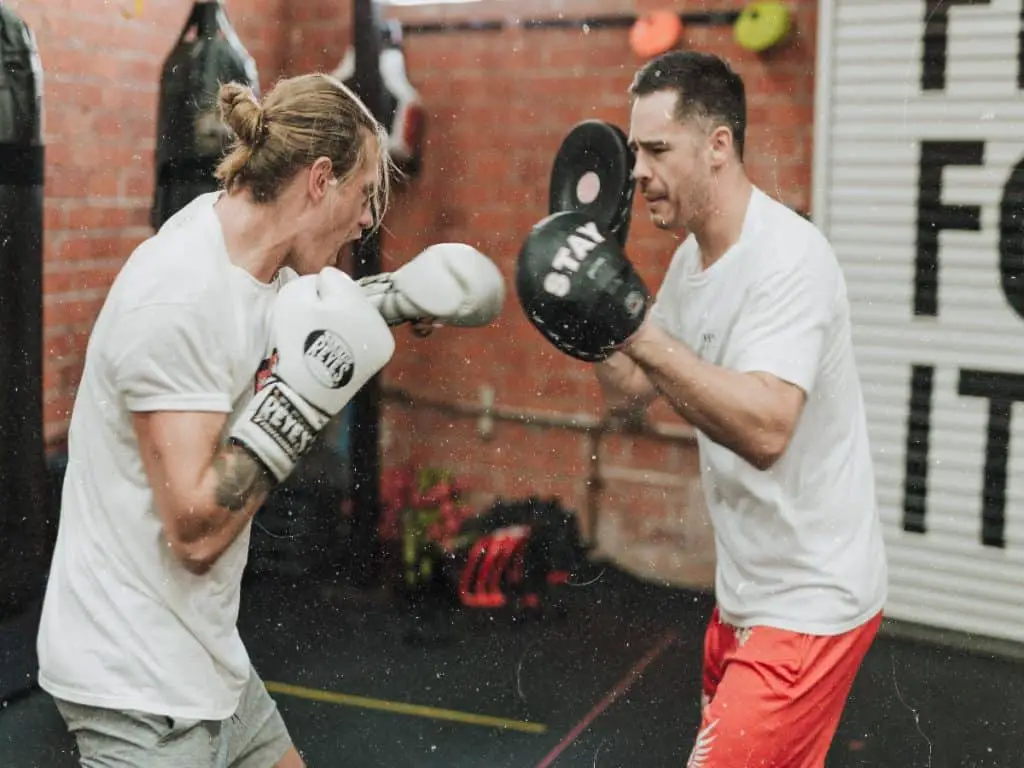
But you must learn easier techniques in the first place. Learning is very complex that determines time and patience. I will guide you through the world of the best Muay Thai techniques for beginners.
Note: number 1 means “technique that is the easiest to learn”, while higher numbers relate to harder techniques that will be “unlocked” after 2-4 weeks. I will analyze for right-handed fighters, if you’re a southpaw, just mirror the moves, please.
Oh, you can start your learning process with a high kick, but irregular technique leads to a greater chance of getting knocked out in the fight, plus it affects your learning process negatively. You’ll need at least 8000 – 10000 repetitions to master the technique, please don’t ignore this fact!
First of all, let’s assume your coach taught you how to assume the Muay Thai stance because this is the basics. You know it, do you? Great! Let’s start!
1. Jab
Every single striking martial art begins with a jab. Let me guess your question. What the hell are you talking about? Well, a beginner who has never competed can’t land a middle kick followed by a tornado kick to the head in the first training session. This is not a video game ladies and gentlemen!
When you assume the Muay Thai stance, extend your left arm to the angle of 174-178 degrees clenching the fist and strike, keeping your right hand tucked on the chin. It doesn’t look too difficult, but you must rotate your left hip clockwise too (it increases the power of the strike).
It serves to create an opening for a right cross, right hook, leg kick, oblique kick, or elbow. It is also an outstanding way to start a combo.
Many people believe stiff jab has no knockout power, but they are wrong. Even in K1 or kickboxing bout, it is a great way to turn the lights out on a running opponent, especially in the Heavyweight or Super-Heavyweight division.
2. Cross
You’ll probably learn right cross in the first class too. It is the first knockout power strike that is shown to beginners.
Upon assuming Muay Thai stance, extend your right arm keeping your left hand tucked against the chin rotating your body and hip counterclockwise, and hit. It is very important to return your right arm to the starting position as soon as possible, because you might get countered easily, especially against a southpaw opponent.
Muay Thai cross is also a fantastic counter against a low kick expert or a fighter who prefers attacking with a long-range right hook.
3. Teep Kick
You’ll be probably surprised with teep kick’s spot on this list. But it is way easier than, for example, a low kick or a high kick. You don’t have to rotate your hips, plus your opponent’s belly is vulnerable in Muay Thai because fighters mostly hold their hands at the level of their forehead. But this strike is risky because a skillful foe can catch your leg easily.
To deliver a left teep kick, raise your left knee to the level of your belly or chest keeping your hands up and push. There is no need to rotate your standing leg. It is also good for countering aggressive opponents and creating space.
Right teep kick is a bit more complicated. The first phase of the movement is the same, but you must rotate your left leg 45-60 degrees counterclockwise to add more power.
Note: This is one of the easiest Muay Thai techniques for beginners, but don’t do it if your opponent moves a lot to the left or right, you might get countered. You can also jump a bit on your standing leg to increase the power of the strike, especially when the foe is a bit further from you.
4. Low Kick
In kickboxing, a low kick is the most often way to score points, but Muay Thai is the “Science of Eight Limbs”, so this strike plays a great role at the end of the combo or when you’re trying to confuse your opponent.
Left low kick demands from you to raise your left knee in the level of your belly and to attack the opponent’s leg rotating your right leg clockwise and extending your left hand to prevent counterstrike. If you returned to the starting position immediately after the strike, your performance is good.
Right low kick is one of Muay Thai techniques for beginners that are used very often. Raise your left leg on the balls of the foot whilst rotating counterclockwise and extend your right hand to prevent counters.
Low kicks are an awesome way to chop the opponent down, even in an MMA fight. For example, Jared Cannonier stopped Anderson Silva with a nasty first-round low kick. Jose Aldo brutally battered Urijah Faber at WEC 48 in 2010 and despite he survived until the end of the fight and lost via UD, “The Californian Kid” was unable to walk for 2-3 weeks after their Octagon war.
5. Hook
Hooks are awesome to provoke your opponent to march forward and attack you, but at the same time, you can send him to the canvas in the split of a second. Some fighters have a hard time with this technique, so I will try to pinpoint the most important facts.
For a good left hook, you must pivot your left foot inwards and rotate your left hip, keeping the left elbow lined with your left fist. Your right hand is tucked against the chin. This is an excellent strike for a right-handed enemy, especially if his movement is bad.
The right hook is one of the most difficult Muay Thai techniques for beginners. It has knockout power, but beginners are having a hard time pivoting both right and left foot counterclockwise at the same time. The 90-degree rotation of your feet is a must for a powerful strike, plus you must contract your right fist when it passes the line of your right shoulder, which might be tricky.
The hook is good both for counters and aggressive punch flurries, but you must be cautious because a skillful opponent might counter you with a straight punch, which is faster than a hook.
6. Horizontal Elbow
Very similar to hook, and if you mastered it, you won’t have a hard time with this technique. This strike can cut the opponent badly, especially if you hit his temple. Great for clinching.
Assume the Muay Thai stance and don’t move your left arm, but lift your right elbow in the level of your temple and swing counterclockwise with your right elbow, passing the line of your nose.
You must return to the starting position ASAP when you finish the strike. Don’t forget to rotate your hip to the same side to add more power. Oh, the horizontal elbow is one of the most difficult Muay Thai techniques for beginners.
7. Front Kick
It is one of the most recommended Muay Thai techniques for beginners because Muay Thai stance is vulnerable to these types of strikes. Front kick demands a good feel of the fight but it is technically easy, even if you have never taken part in a fight before.
To deliver the left front kick, raise your left leg above the level of your stomach and extend it, hitting the opponent with the balls of your foot. For the right front kick, you’ll have to rotate your left leg slightly counterclockwise, but in both cases, you must keep your hands up to prevent dangerous counters.
The front kick is a good counter-technique by itself too, especially against an opponent who throws easy-to-see long-range haymakers.
8. Slashing Low Kick
Have you ever heard of a downward roundhouse kick? It is very hard when you attack the opponent’s head, but this type of kick is a fabulous way to outsmart the opponent who constantly checks low kicks. The regular block cannot stop this strike because it goes around it. The different name for slashing low kick is “downward roundhouse kick to the thigh”.
To start, raise your right knee to the level of your ribs. Swing downwards under a 45-degree angle and start rotating your standing leg counterclockwise keeping your arms up until you return to the starting position. Aim for the thigh or ischial nerve, this might hurt the opponent. Many will say it is one of the hardest Muay Thai techniques for beginners because you must be very precise.
Note: always attack the opponent’s front leg, as you might hurt yourself otherwise.
9. Slashing Elbow
Slashing elbow is one of the most often strikes in this ancient Siamese martial art. Very effective against an opponent who constantly goes forward and sticks to strong but slow haymakers.
The strike can rock or cut the opponent very easily, especially when performed as a counter. Even more dangerous when your opponent is pressed against the fence. It is also good to finish a combo on the cornered foe.
To deliver right slashing elbow, stay inside the pocket in the first place. Lift your right elbow above the level of your forehead shifting your bodyweight to the front leg and swing diagonally forward at a 45-degree angle. Follow the movement with your other body and hips, keeping another leg at the level of your chin. Left slashing elbow is very similar, just apply mirror movements.
10. Straight Knee
Simply grab your foe’s neck with two hands (pummel), and raise the attacking knee off the floor above the level of your hips. Push your hip forward to increase the power of the strike and lift on the balls of your foot. This strike can hurt the opponent’s chest, stomach, or head. To add more power to this strike, switch stance and attack with your rear leg.
This strike is easy, but pummeling might be very hard for beginners. So here is a tutorial on double-collar tie clinch, please watch it thoroughly (you’ll see counters, but also look how’s the double collar position established).
If you want to do it without grabbing, you’ll have to counter or push your hip a bit more forward to finish the combo with this strike. In MMA, it is probably the best way to defend a takedown.
11. Diagonal Knee
First of all, grab the foe’s neck with two hands (watch straight knee) and raise your knee diagonally to aim the foe’s thighs, ribs, spleen, or liver. Theoretically, you can attack to the head, but then we don’t discuss Muay Thai techniques for beginners, because this is an advanced technique.
Conclusion
Every beginning is difficult, and you’ll need some time to get in the spirit of things. Muay Thai techniques for beginners might look easy, but patience is the key. Keep learning and improving your skills. If you stay persistent, you’ll become a combo specialist in less than two years!
Last Updated on May 21, 2022 by Deni
